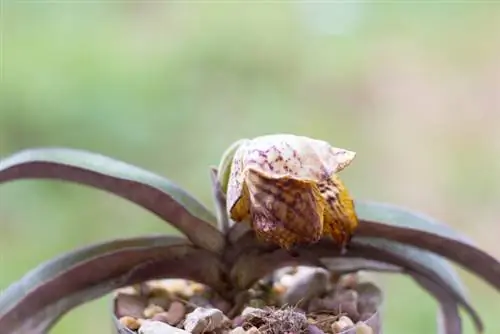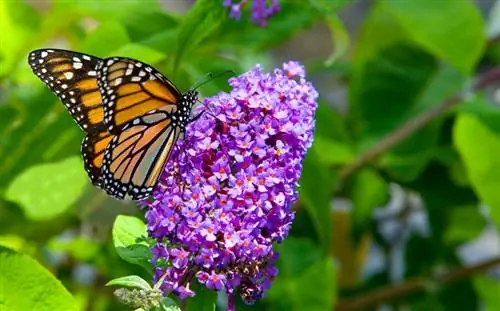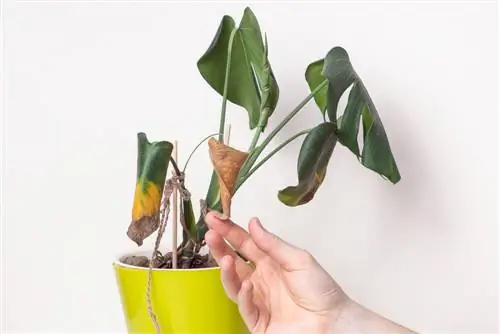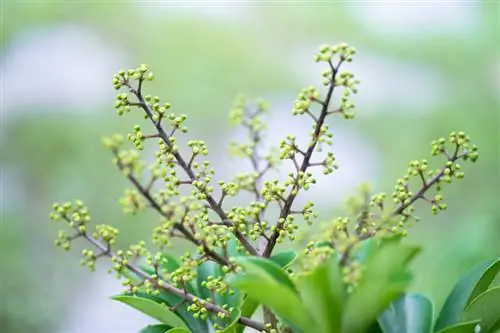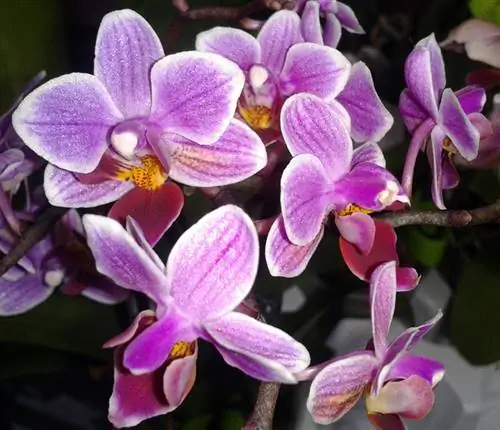- Author admin [email protected].
- Public 2023-12-16 16:46.
- Last modified 2025-06-01 06:02.
In the supermarket, the shelves bend under the large number of magnificently blooming phalaenopsis. Declared to be the ideal orchid for beginners, the tropical flower goes into the shopping basket. But the disappointment is great when it drops the flowers within a short time and dies. Read here which care program you can use to preserve your flower diva.
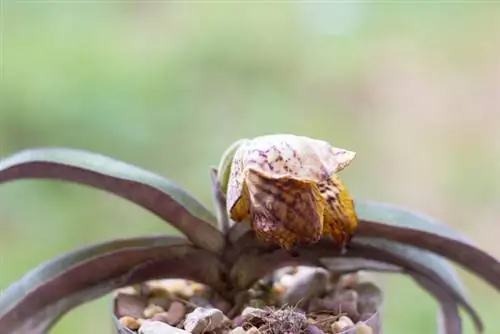
Why is my orchid dying and what can I do about it?
To prevent an orchid from dying, you should dive it regularly, use the right orchid soil, care for it properly after flowering and provide sufficient light and heat.
Diving tops watering - How to do it right
If an orchid dies, the dilemma is usually due to incorrect watering. Beginners in particular are unsure when and how to water a Phalaenopsis. By dipping the root ball you avoid the problem:
- Dive the orchid once a week during the flowering and growth period
- Pour lukewarm, lime-free water into a bucket to soak the roots until no more air bubbles appear
- Drain the water well
The orchid only takes the next water bath when the culture pot is no longer steamed up from the inside and feels very light when lifted. In winter this may only be necessary every 3 to 4 weeks.
Every orchid dies in potting soil
Any care measures will be in vain if you place a Phalaenopsis in standard potting soil. In its homeland, the orchid thrives as an epiphyte of mighty jungle giants, clinging to the branches with some of its roots while the aerial roots collect water and nutrients.
Therefore, only use coarse pine bark as orchid soil, supplemented with inorganic components such as lava granules or perlite. Organic additives such as coconut fiber, nut shells or sphagnum retain moisture without causing rot.
Tip
Proper care after flowering ensures that your orchid does not die in winter. Only cut off leaves or flower stems when they are completely dry and dead. The location should still be bright and warm, with temperatures of 16 to 20 degrees Celsius. Water more sparingly and do not apply fertilizer until the next shoot appears.

